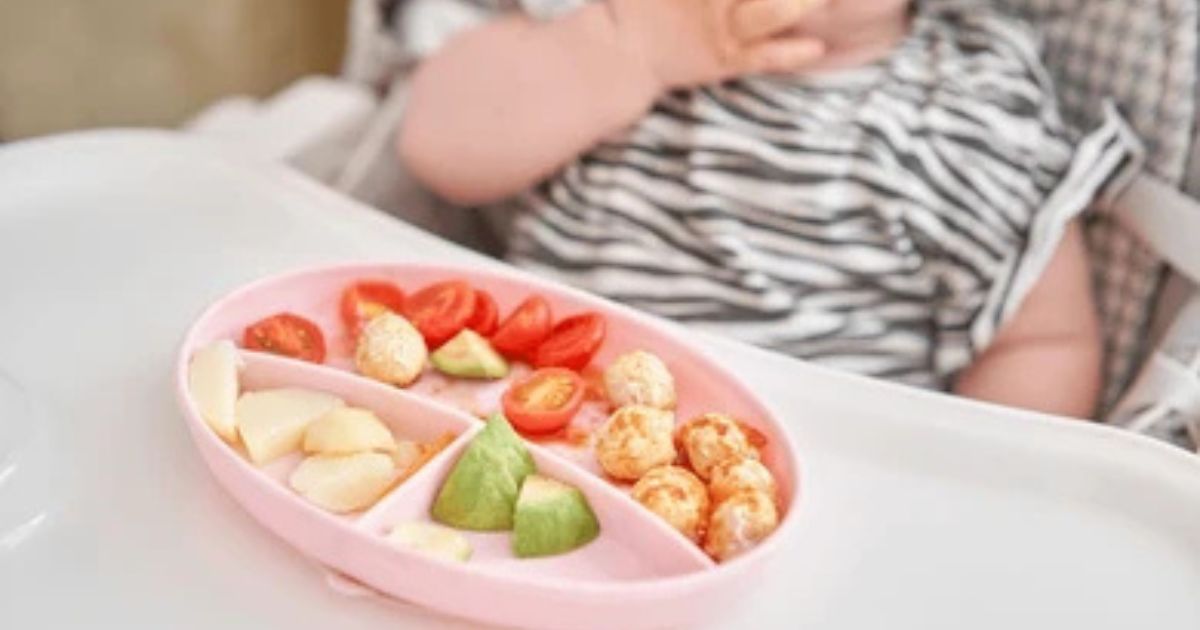10 Months Old Baby Food Chart: A Complete Guide
When your baby reaches 10 months, their diet looks more like the family’s. They are likely eating a mix of breast milk or formula and solid foods of various textures. This stage is exciting as your baby’s taste preferences and self-feeding skills develop. Below is a comprehensive guide to creating a nutritious and balanced food chart for your 10-month-old.

Nutritional Needs of a 10 Months Old Baby
At this stage, your baby’s diet should consist of:
- Breast Milk/Formula: Still an essential source of nutrients; offer 16-24 ounces daily.
- Solid Foods: Three meals a day with various textures and flavours.
- Snacks: 1-2 small, healthy snacks to energise your baby.
- Water: Introduce small amounts of water in a sippy cup to keep them hydrated.
10 Month Baby Food Chart in Pakistan
Below is a sample daily schedule to help you plan your baby’s meals:
Morning (Breakfast)
Breast Milk/Formula: 6-8 ounces.
Solid Food:
- 2-3 tablespoons of oatmeal or rice cereal mixed with milk.
- 2-3 tablespoons of mashed fruit (banana, apple, or pear).
- Small pieces of scrambled eggs (optional).
Mid-Morning Snack
- Small cubes of soft fruit like watermelon, papaya, or kiwi.
- A few rice puffs or baby biscuits.
Lunch
Solid Food:
- 2-3 tablespoons of cooked rice or soft-cooked pasta.
- 2-3 tablespoons of mashed or finely chopped vegetables (carrot, peas, sweet potato).
- Small pieces of cooked chicken, fish (boneless), or tofu for protein.
- A teaspoon of unsalted butter or olive oil for healthy fats.
- Water: 2-3 ounces in a sippy cup.
Afternoon Snack
- A small portion of plain yoghurt with mashed berries or pureed fruit.
- Soft finger foods like steamed broccoli or carrot sticks.
- Evening (Dinner)
- Breast Milk/Formula: 6-8 ounces.
Solid Food:
2-3 tablespoons of lentil soup or dal.
Soft-cooked roti or bread pieces soaked in soup.
Mashed vegetables or soft avocado slices.
Before Bedtime
- Breast Milk/Formula: 6-8 ounces.
Tips for Feeding a 10-Month-Old Baby
- Encourage Self-Feeding: Offer finger foods to promote independence and improve motor skills.
- Balanced Diet: Ensure meals include a mix of carbohydrates, proteins, fats, and vitamins.
- Texture Progression: Move from purees to mashed, finely chopped, soft finger foods.
- Avoid Choking Hazards: Avoid whole nuts, popcorn, grapes, and raw vegetables.
- Limit Salt and Sugar: Babies’ kidneys are still developing, so avoid adding salt or sugar to their food.
Foods to Include
- Proteins: Eggs, chicken, fish, tofu, lentils, and beans.
- Carbohydrates: Rice, oats, pasta, bread, and potatoes.
- Fruits: Bananas, apples, peaches, pears, and berries.
- Vegetables: Sweet potatoes, carrots, peas, zucchini, spinach, and broccoli.
- Dairy: Plain yoghurt, small amounts of cheese (if tolerated).
- Healthy Fats: Avocado, olive oil, and unsalted butter.
Foods to Avoid
- Honey (risk of botulism).
- Cow’s milk as a primary drink (okay in small quantities in food).
- Whole nuts, large chunks of meat, or hard fruits.
- Sugary snacks, processed foods, and salty items.
Signs of Fullness and Hunger
Pay attention to your baby’s cues:
- Hunger: Reaching for food, opening their mouth, or showing excitement during mealtime.
- Fullness: Turning their head away, closing their mouth, or playing with the food instead of eating it.
Conclusion
A 10-month-old baby’s diet should be diverse, nutritious, and enjoyable. By offering a variety of foods and textures, you are laying the foundation for healthy eating habits. Always consult your paediatrician before introducing new foods, especially if there’s a family history of allergies. Happy feeding!